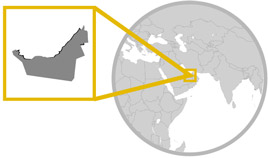Weather & Climate
Due to the variety of high mountainous regions to low flatlands and even seaside locations, the climate of Brazil is incredibly varied in turn and has all of the subtropical, equatorial, temperate, tropical, highland tropical and semiarid environment types as a result. However, throughout most of Brazil it is always prone to rain and this differs only a little from region to region.
The Southeastern region of the country typically sees temperatures on average at around 29 degrees Centigrade (84.2 degrees Fahrenheit) between the months of January and March, but this can go as high as 34 degrees Centigrade (93.2 degrees Fahrenheit) in Santos and as low as 24 degrees Centigrade (75.2 degrees Fahrenheit) in Campos do Jordao. Aversely, the region can drop as low as 11 degrees Centigrade (51.8 degrees Fahrenheit) between the months of June and August but this can be lower still in Campos de Jordao at 4 degrees Centigrade (39.2 degrees Fahrenheit) or as high as 18 degrees Centigrade (64.4 degrees Fahrenheit) in Rio de Janeiro.
Rainfall in this region tends to be highest between the months of December and February and typically averages around 200-320mm of precipitation. Contrarily, the lowest amount of rainfall is in the months of June to September at around 10-110mm. Belo Horizonte tends to have both the highest and lowest precipitations during these months, respectively.
The Southwestern region of Brazil tends to be more consistent over the region but fluctuates more over the course of the year. This is visible in the yearly high average during December to February of 26.5 degrees Centigrade (79.7 degrees Fahrenheit) but can be higher in Porto Alegre at 30 degrees Centigrade (86 degrees Fahrenheit) and lower in Sao Joaquim at 23 degrees Centigrade (73.4 degrees Fahrenheit). Meanwhile the yearly low is during June and August at around 9 degrees Centigrade (48.2 degrees Fahrenheit) with Sao Joaquim even lower at 6 degrees Centigrade (42.8 degrees Fahrenheit) and Florianopolis higher at 12 degrees Centigrade (53.6 degrees Fahrenheit).
In this region, precipitation is fairly consistent with the highest amount falling in the months of January to March at around 100-200mm and the lowest falling in the months of June to August at between 70-180mm. Out of these the area with the highest rainfall is Caxias do Sul and the lowest is Florianopolis
The Northeastern region tends to be less consistent throughout the region, but more consistent over the course of the year, what’s interesting is that both the high and low points of the year can be around the same time for the cities. Teresina, for example, can have both its highest temperatures and its lowest temperatures between the months of August and October with temperatures of 36 degrees Centigrade (96.8 degrees Fahrenheit) and 21 degrees Centigrade (69.8 degrees Fahrenheit) respectively. Teresina actually has the highest and lowest temperatures of the entire region and can have them during the same months; most other cities follow this pattern but to a lesser effect and usually the months are different.
Rainfall-wise, this region has an incredibly dynamic series of months and the amount of rainfall dramatically changes from city to city with the highest months in Fortaleza and Recife in April to June at around 350-400mm whilst the driest months in Teresina and Salvador are in August to September and can range between 20-110mm.
The Northwestern region, is the most consistent all-around region with its hottest temperatures between the months of September and November at around 32.5 degrees Centigrade (90.5 degrees Fahrenheit) with a couple of degrees higher in Boa Vista at 34 degrees Centigrade (93.2 degrees Fahrenheit) and a couple of degrees lower in Porto Velho at 31 degrees Centigrade (87.8 degrees Fahrenheit). Meanwhile the lowest temperatures in the region tend to fall around the months of June to August at around 20.5 degrees Centigrade (68.9 degrees Fahrenheit) but this can be as low as 18 degrees Centigrade (64.4 degrees Fahrenheit) in Porto Velho and higher in both Manaus and Macapa at 23 degrees Centigrade (73.4 degrees Centigrade).
The Northwestern region also has one of the highest amounts of rainfall at around 280-440mm between the months of February and April but also one of the lowest amounts in August to October at only around 20-110mm. Again, however, this region’s weather fluctuates rapidly, despite the high consistency of temperatures.


